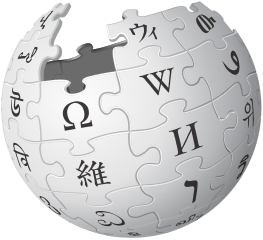To better understand the discussion below, the best thing to do is to read it in parallel with the simplest possible example: Schrödinger picture example: quantum harmonic oscillator.
"Making a measurement" for an observable means applying a self-adjoint operator to the state, and after a measurement is done:Those last two rules are also known as the Born rule.
- the state collapses to an eigenvector of the self adjoint operator
- the result of the measurement is the eigenvalue of the self adjoint operator
- the probability of a given result happening when the spectrum is discrete is proportional to the modulus of the projection on that eigenvector.For continuous spectra such as that of the position operator in most systems, e.g. Schrödinger equation for a free one dimensional particle, the projection on each individual eigenvalue is zero, i.e. the probability of one absolutely exact position is zero. To get a non-zero result, measurement has to be done on a continuous range of eigenvectors (e.g. for position: "is the particle present between x=0 and x=1?"), and you have to integrate the probability over the projection on a continuous range of eigenvalues.In such continuous cases, the probability collapses to an uniform distribution on the range after measurement.The continuous position operator case is well illustrated at: Video "Visualization of Quantum Physics (Quantum Mechanics) by udiprod (2017)"
Self adjoint operators are chosen because they have the following key properties:
- their eigenvalues form an orthonormal basis
- they are diagonalizable
Perhaps the easiest case to understand this for is that of spin, which has only a finite number of eigenvalues. Although it is a shame that fully understanding that requires a relativistic quantum theory such as the Dirac equation.
The next steps are to look at simple 1D bound states such as particle in a box and quantum harmonic oscillator.
This naturally generalizes to Schrödinger equation solution for the hydrogen atom.
The solution to the Schrödinger equation for a free one dimensional particle is a bit harder since the possible energies do not make up a countable set.
This formulation was apparently called more precisely Dirac-von Neumann axioms, but it because so dominant we just call it "the" formulation.
Quantum Field Theory lecture notes by David Tong (2007) mentions that:
if you were to write the wavefunction in quantum field theory, it would be a functional, that is a function of every possible configuration of the field .
TODO: use the results from the quantum harmonic oscillator solution to precisely illustrate the discussion at Schrödinger picture with a concrete example.
The idea the the wave function of a small observed system collapses "obviously" cannot be the full physical truth, only a very useful approximation of reality.
Because then are are hard pressed to determine the boundary between what collapses and what doesn't, and there isn't such a boundary, as everything is interacting, including the observer.
The many-worlds interpretation is an elegant explanation for this. Though it does feel a bit sad and superfluous.
One single universal wavefunction, and every possible outcomes happens in some alternate universe. Does feel a bit sad and superfluous, but also does give some sense to perceived "wave function collapse".
Articles by others on the same topic
The Schrödinger picture, also known as the Schrödinger representation, is one of the formulations of quantum mechanics that describes the evolution of quantum states over time. In this framework, the quantum states (wave functions) evolve according to the time-dependent Schrödinger equation, while the operators corresponding to observables remain constant in time.
